Ever see “100% Arabica” in a cafe? Or maybe “made with a blend of Arabica and Robusta” on the packaging of some coffee beans? Those two words are important when it comes to coffee. Especially if you want to make the good stuff.
In just a few minutes, you’re going to understand the precise differences between Arabica and Robusta. You’ll know which one’s better for different types of drink, too. Oh… you’ll even find out the weird reason why you see “100% Arabica” so much.
Arabica vs Robusta
Arabica and Robusta are both species of coffee bean (Coffea). Look at the photos below to see what the coffee beans look like. Arabica is a little bigger, lighter and has a curved center where Robusta tends to be more straight.


I like to think of Arabica and Robusta a little like Coke and Pepsi. Arabica is like Coke, the popular one that people thinks tastes better. Whereas Robusta is like Pepsi, still quite popular and has some uses. Like how you get Pepsi at KFC, you get Robusta in espresso blends. Hope that’s not too much of a stretch!
They’re more similar than they are different, to be honest, but the differences are very important. Let me explain…
Arabica
Arabica makes up most of the world’s coffee. It accounts for around 75-80% of the world’s production, and I don’t think it’s unfair to say that almost all the high quality coffee you drink will be Arabica.
The reason it’s so popular is its taste. Arabica coffee is more aromatic and flavorful while also having less undesirable flavors like bitterness. To be honest, I’d hazard a guess that most folks don’t even realise how good they’ve got it with Arabica because it’s all they’ve ever had!
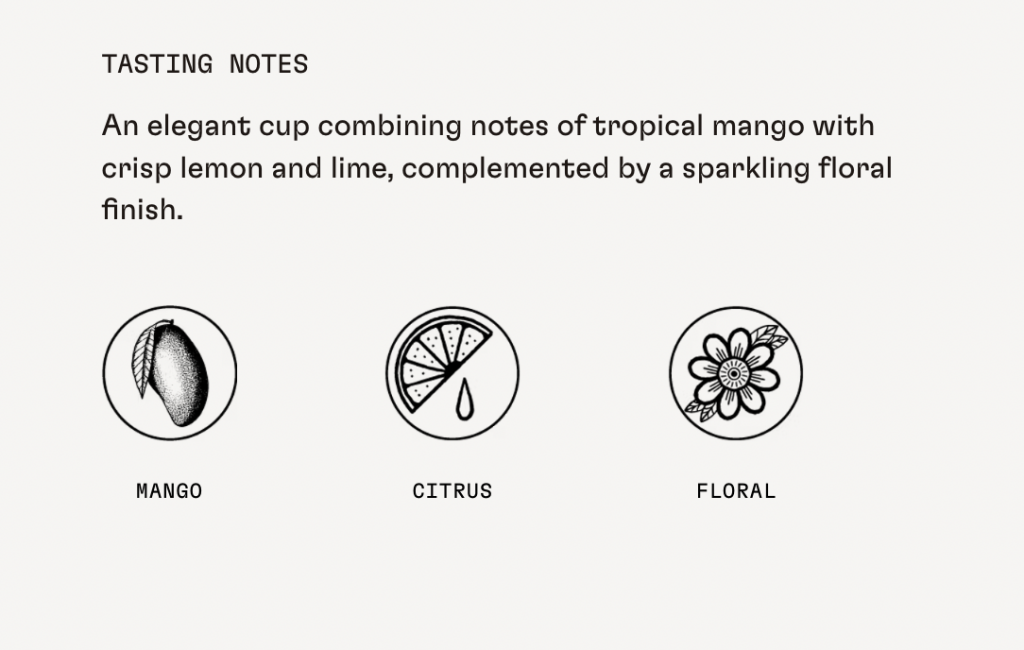
To give you an idea, I searched a popular online coffee roaster for some coffee beans. I just clicked on the first one I saw. A Guatemalan something or other. On the right you can see the tasting notes. Mango, Citrus, Floral… mmm. Sound nice? I couldn’t find anything about Arabica and Robusta but I’d put my house on it being only Arabica beans. These kind of smooth and flavorful notes only really come with Arabica.
Arabica coffee is harder to grow than Robusta and other types of coffee. It’s less hardy, more susceptible to disease and also needs more pesticides. Arabica also needs to be grown in high altitude — usually in hills or mountains — with the right amount of sun but also the right amount of shade. Whew. All that is what makes Arabica the most expensive coffee to buy.
One more thing… Remember what I said about “100% Arabica”? Be wary when you see this. Outside of espresso blends, almost all coffee sold in a coffee place will be Arabica, so a sign saying “100% Arabica” is probably just a marketing ploy. One that’s maybe covering up for substandard coffee.
Robusta
Robusta is the second most popular type of coffee and makes up about 20-25% of all the coffee produced across the world.
Robusta coffee tastes bitter and burnt. I’ve tried it black myself, and it’s not great. The countries where it is popular usually use a lot of sugar and/or milk to make it nice enough to drink. On the other hand, it has a higher caffeine content than Arabica.
That higher caffeine content is important when it comes to growing Robusta. It’s a much easier crop to grow. One of the reasons is its high caffeine content acts as a natural insecticide and anti-microbial agent. That improves the efficiency of farming, and makes it cheaper to buy — most estimates put it at about 1/2 to 1/3 the price of Arabica.
So where do you find Robusta? Well, it’s used a lot in instant coffee where taste isn’t quite as important. You also find it sold normally in some countries in Asia like Vietnam or the Phillipines where it can be grown, produced and sold all in the country. That makes it a lot cheaper and therefore more suitable for countries that are a little poorer.
You do find Robusta in high quality coffee too, but usually in blends along with Arabica. The most common case is in espresso blends, where a small amount of Robusta is very common. It’s supposed to be great at getting a little extra crema on the shot, and this is why Robusta is actually kinda popular in Italy, too.
| Arabica | Robusta | |
|---|---|---|
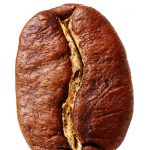 | 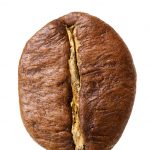 | |
| Grows at: | High Altitude (600-2000m) | Low Altitude (200-800m) |
| Caffeine: | Medium Caffeine Content | High Caffeine Content |
| Taste: | Mild, aromatic, flavorful | Harsh, bitter, highly caffeinated |
| Used for: | High quality coffee | Cheap coffee, instant coffee, espresso blends |
| Typical Roast: | Any | Dark |
| Percentage of world production: | 75-80% | 20-25% |
FAQ
Where is Arabica and Robusta grown?
Arabica and Robusta are both grown in the three main coffee producing regions of Africa, Asia and Latin America. However, Robusta is more closely associated with Asia. The following graphic gives a decent breakdown by country:
In this picture, R = Robusta, A = Arabica and M = Both Arabica and Robusta. It’s not perfect, mind. I’ve definitely had Arabica from Thailand. Just a little out of date, maybe.
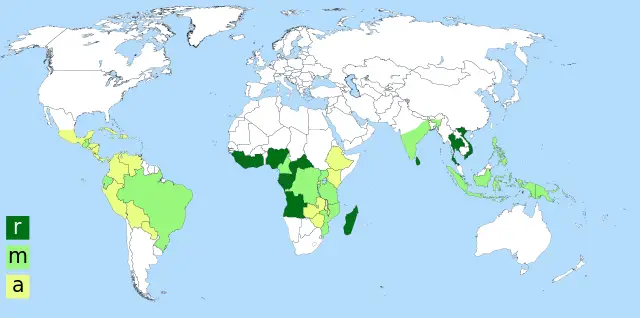
Where can I get high quality Robusta?
There are few options for people interested in trying Robusta in the West, because most coffee sold is the higher quality Arabica. However, there are some.
For starters, I’d recommend checking out Death Wish Coffee. This is a modern brand that sells itself on being the strongest (=most caffeinated) coffee you can get. It needs to use Robusta to get the strength up, although I do believe there’s some Arabica in there.
There’s a lot of copycat brands these days, too. You might be able to find one that does 100% Robusta. Check them out on Amazon.
If you want more authentic Robusta, then you probably need to find coffee beans from Asia countries like Vietnam or the Phillipines. Ebay is a good bet. I did a quick search just now and there were some good options for roasted 100% Robusta coffee.
Why is Robusta not popular?
Robusta is not as popular as Arabica because of the taste. Robusta coffee is much more bitter than Arabica and has less of the aromatic and flavorful tastes. Even when you load up your coffee with cream and sugar — basically a requirement to drink Robusta — Arabica still comes out on top in terms of taste. In fact…
Robusta is a lot cheaper (at least 50%) and easier to grow in different places. So you can imagine how different the taste must be for Arabica to still be the most popular type of coffee.
Is Arabica or Robusta healthier?
There is not a great deal of difference between Arabica and Robusta in terms of health. They are very similar, both being species of Coffea, and offer the same health benefits that any coffee drink would. However…
Robusta does have significantly more caffeine than Arabica. So if you consider caffeine to be unhealthy, then Arabica is healthier. To the best of my knowledge though, caffeine doesn’t have any long term health impact.
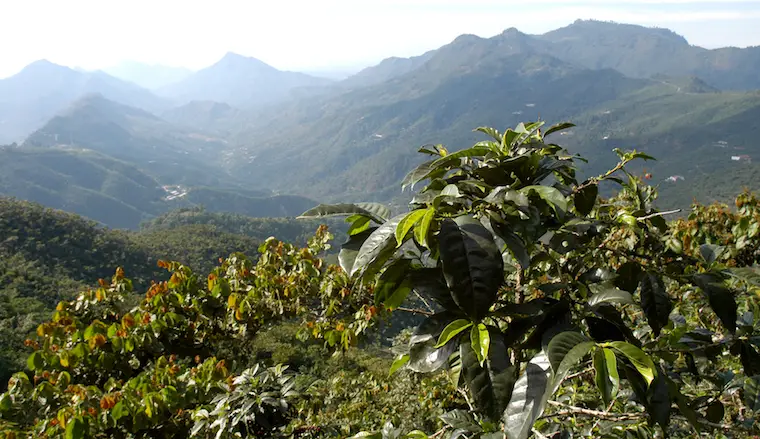
Why is Robusta cheaper?
Robusta is cheaper because it’s a more hardy crop. The higher caffeine content acts as a natural pesticide and anti-microbial agent, and it doesn’t need to be grown in hilly elevations like Arabica.
Is 100% Arabica the best coffee?
No. Anything that tells you “100% Arabica” is at best informing you that it’s all the Arabica coffee bean, but at worst is a sneaky bit of marketing. That’s because Arabica coffee can be fantastic or it can be mediocre. A coffee bean that’s 100% Arabica isn’t necessarily a high quality coffee.
Which countries drink Robusta?
Countries that drink Robusta coffee are mainly Asia countries were they grow and sell the Robusta bean in the country, for example Vietnam, The Phillipines and Indonesia. However, many more countries beside do drink Robusta too.
This is due to Robusta’ common usage in espresso. And actually, the US is the world’s largest consumer of Robusta coffee for this reason. Italy is another country that consume a great deal of Robusta in their espresso as well
Is Arabica or Robusta used for espresso?
A typical espresso blend contains both Arabica and Robusta. A typical example of an “Espresso Blend” might be 80% Arabica 20% Robusta. So why doesn’t espresso always use the higher quality Arabica? Well…
Using just Arabica for espresso can result in a thin and watery shot. Maybe it tastes weak. Or feels under-caffeinated. Adding some Robusta improves the texture of the espresso, imparting a thick, velvety crema and also a small boost in caffeine.
This is not an iron-cast rule, however. There are lots of espresso blends that are only Arabica.
Are there other coffees that aren’t arabica or robusta?
There are over 200 identified species within the genus Coffea. While two of them, Arabica and Robusta, make up around 98% of the world’s coffee consumption, there are others that are drank, too.
One example is Liberica. This species of coffee was discovered in Liberia in 1943 — hence the name — and is popular in East Asia where it suits the growing conditions. In Malaysia for instance, it makes up most of the coffee that is grown and sold in the country.
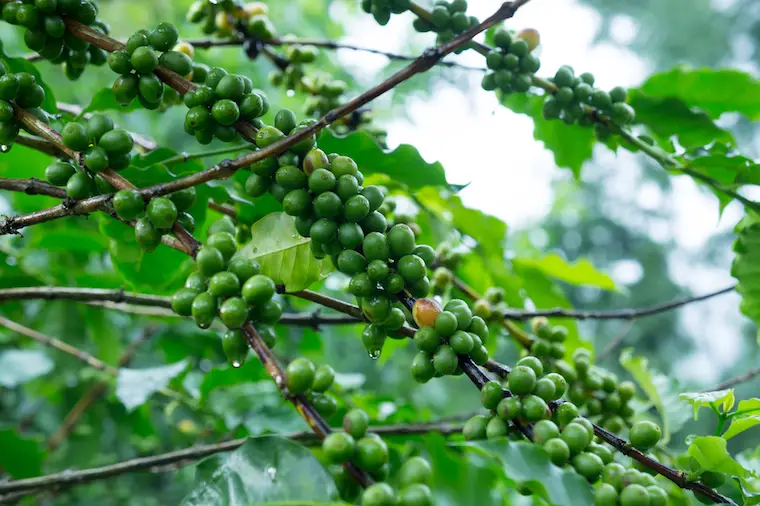
Conclusion
Now you know a little more about Arabica and Robusta coffee beans. But really, this is just scratching the surface.
Here’s a surprising fact: the region your coffee beans are grown in has a huge impact on the taste. Maybe even more than whether it’s Arabica or Robusta (maybe). You can read more here about how it changes, from Africa to Asia to the Americas.
Likewise, the roast is another huge part of what makes up your coffee. Do you know the difference between a Dark Roast and a French Roast? Read this article to find out.

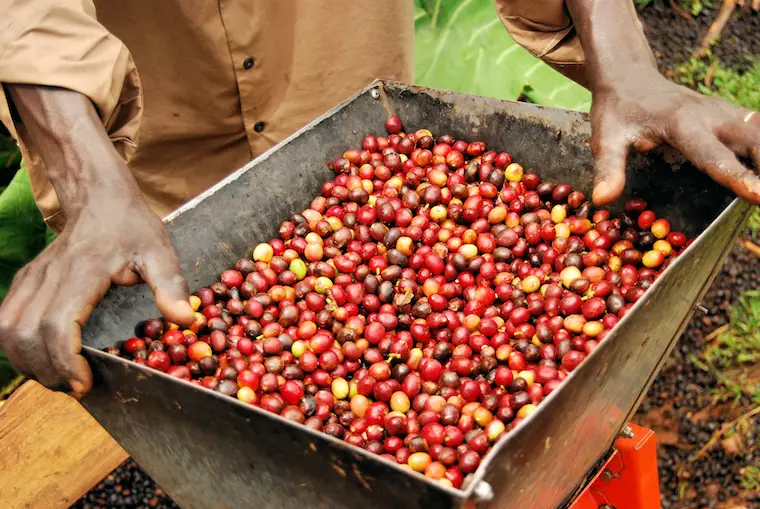
No Comments